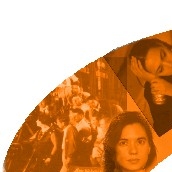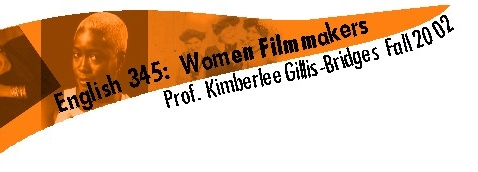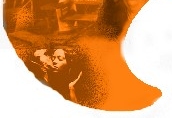


| Course M, 2:30-5:20 W, 2:30-4:20 Thomson 125 |
| Instructor K. Gillis-Bridges Padelford A305 543-4892 MW, 1:00-2:20 |
| Page last updated 12/10/02 |

Dunye Presentation Outline
Presenters: Cristina Brendicke and Jamie Chi
About Cheryl Dunye
- Born in Liberia 1966
- Grew up in Philadelphia
- Attended Temple University where she received her BA
- Received MFA from Rutgers University’s Mason Gross School of the Arts
- Actor, writer, and director
- Has 2 Children with partner Alexandra Juhasz
- Janine (1990)
- She Don’t Fade (1991)
- Vanilla Sex (1992)
- Untitled Portrait (1993)
- The Potluck and the Passion (1993)
- Greetings From Africa (1994)
- The Watermelon Woman (1996)
- Stranger Inside (2000)
“It’s a mixture of truth and fiction and the way you want the world to work for you. So many people are not honest about the truths and fictions of their lives and how they coexsist…That’s how it’s handled in the film, using documentary and narrative to make everything real.” – Cheryl Dunye
Elements of the “Dunyementary”
- Talking Head Monologue
- Person- on – the street interviews
- Real World Like Confessional Scenes
- Metanarrative
- Archival footage
- Mix of real and pseudo-history
- Three Elements Cheryl uses: talking heads, vignettes or stories, and text
- To address issues occurring throughout the film
- To fill in the audience of the character’s point of view
- To emphasize the importance of social issues
- More confessional
- Starts as third person and transforms into third person (bringing confusion to the viewer)
- Different camera shots
- Reference to other characters and fellow actresses in the film
- Narrative
- Documentary of the director
- Person-on-the-street interviews
- Archival footages
- Real History
Other Interesting Facts About
Cheryl Dunye and The Watermelon Woman
- The Watermelon Woman was contested in Congress because the NEA donated money to the project and it contained an explicit lesbian sex scene
- The Watermelon Woman won numerous awards: Teddy Award; Audience Award; Completion Grant; Media Production Award; Vito Award.
- Martha Page was made to look similar to Dorothy Arzner
- She is currently under contract to direct a film for Miramax films called My Baby’s Mama
- She is an instructor in the Department of Art at the University of California, Riverside and the Department of Media Studies at Pitzer College in Southern California.
- “The Watermelon Woman came from the real lack of any information about the lesbian and film history of African-American women. Since it wasn’t happening, I invented it.” – Cheryl Dunye
- Why do you suppose Cheryl Dunye titled the film The Watermelon Woman?
- What is significance of the archival footage of Fae Richards and Martha Page together?
- What is the importance of the Zoe Leonard’s archival pictures being displayed as a separate piece of work?